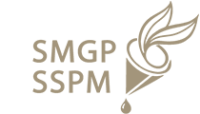9 Minutes
Commonly known as Effexor, venlafaxine is a popular psychiatric medication prescribed to manage the symptoms of depression and anxiety disorders. With millions of prescriptions written for it globally, venlafaxine remains the most commonly prescribed and used drug worldwide. Ironically, it is also notorious for triggering antidepressant discontinuation syndrome (ADS), a constellation of symptoms linked with antidepressant withdrawal.
More than one-quarter of the people using venlafaxine regularly suffer from ADS in an attempt to quit it cold turkey. Characterised by highly uncomfortable symptoms, such as visual disturbances, vertigo, anxiety, insomnia, and tingling sensations in the body, venlafaxine withdrawal can be intimidating for anyone. Hence, the best way to stop using this drug is through a professional rehab specialising in these addictions.
FAQs
A UNIQUE METHOD TREATING Prescription Drugs
a successful and proven concept focusing on underlying causesPrescription Drugs TREATMENT LASTING APPROACH
0 Before
Send Admission Request
0 Before
Define Treatment Goals
1 week
Assessments & Detox
1-4 week
Psychological & Holistic Therapy
4 week
Family Therapy
5-8 week
Aftercare
12+ week
Refresher Visit
Prescription Drugs Insights
latest news & research on Prescription Drugs
Fentanyl Poisoning
Opioid toxicity, including fentanyl poisoning, can lead to severe side effects and potentially life-threatening issues that develop immediately after consuming the high dose
read moreMogadon
Addiction to Mogadon can develop over time, and it's important to be aware of the warning signs
read moreDiazepam Withdrawal Symptoms
A diazepam withdrawal can be excruciating and draining, even dangerous in some cases. Suppose you are addicted to diazepam and wish to discontinue it
read moreAccreditations

































































